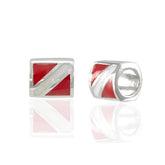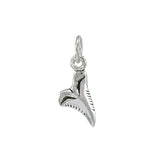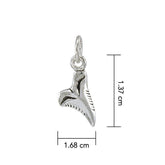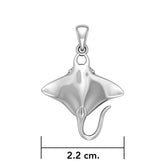Enhancing Retail Success with Dive Silver Jewelry: A Strategic Overview for Dive Shops and Resorts
Introduction: The Significance of Dive Silver Jewelry in Retail Business
In the competitive retail landscape, particularly in niche markets such as dive shops and resort gift stores, dive-themed silver jewelry emerges as a powerful and profitable product category. This chapter provides an in-depth exploration of the strategies, market insights, and operational tips shared by Peter Wolski, President and CEO of Dive Silver Jewelry, based on his recent observational study in the Florida Keys. The primary focus is on how dive-themed sterling silver jewelry can serve as a lucrative retail segment, capitalizing on impulse buying behavior and tourist traffic. Key concepts such as markup strategies, retail display optimization, customer engagement, and e-commerce integration are examined to help retailers maximize profits while offering customers meaningful souvenirs and gifts.
The chapter underscores the common misconception that jewelry is always high-priced and risky inventory, clarifying that much of the jewelry sold in this niche is affordably priced, typically around $50 to $70 retail, making it accessible and attractive to a broad customer base. Additionally, the concept of impulse purchases is emphasized, showing how well-placed jewelry displays can generate significant profits with minimal space and maintenance.
Section 1: Market Observations and the Business Environment in Tourist Destinations
Peter Wolski’s recent visit to the Florida Keys provided firsthand insights into the vibrant retail activity during peak tourist times, such as long weekends. His observations highlight several critical factors influencing jewelry sales:
-
Tourist Behavior and Shopping Trends
- Visitors engaged in a variety of recreational activities, including snorkeling, scuba diving, and shopping.
- Many shoppers were seen carrying multiple bags, indicating active purchasing.
- Jewelry purchases occurred both during the day and at night, reflecting continuous demand.
-
Retail Environment
- Dive shops and resort stores exhibited bustling activity, fueled by international tourists from diverse regions, including Australia, Thailand, and various parts of the world.
- The tourist influx to Florida and Caribbean dive destinations creates an ideal market for dive-themed products.
-
Impact of Economic Conditions
- Despite economic challenges, such as the downward trend in silver prices (hovering around $15 per ounce), jewelry remains a viable retail option.
- Some dive shops had ceased selling dive silver jewelry previously due to cost concerns, but the current pricing environment supports renewed investment.
Key Takeaways:
- Tourist hotspots generate a steady flow of potential customers open to impulse buys.
- Affordable dive silver jewelry aligns well with customer expectations in these markets.
- Retailers can leverage current economic conditions to stock and promote silver jewelry profitably.
Section 2: Product Pricing and Profit Margins in Dive Silver Jewelry
A central theme in the presentation is the financial attractiveness of dive silver jewelry for retailers, particularly when compared to other retail segments or investment vehicles:
-
Affordable Price Points
- Most dive silver jewelry items retail between $50 and $100.
- These price points appeal to a broad demographic, from casual tourists to dive enthusiasts.
-
High Markup Potential
- Retailers typically apply a 2 to 4 times markup on wholesale prices.
- Peter Wolski emphasizes the possibility of achieving up to a 300% markup, a return rarely matched by traditional investments like stocks.
-
Space Efficiency and Revenue Generation
- Jewelry displays require less than one square foot of retail space.
- A single small display can generate approximately $10,000 in annual revenue.
- Compared to lower-margin items such as keychains or shells, jewelry delivers significantly higher profits per retail square foot.
Supporting Evidence:
- Retailers replacing low-margin trinkets with dive silver jewelry report improved profitability.
- The jewelry’s vertical display format optimizes store real estate and encourages impulse purchases near cash registers.
Section 3: Strategic Retail Placement and Impulse Buying
The importance of strategic placement and display management is another critical point discussed:
-
Jewelry Displays as Impulse Triggers
- Displays are designed to be compact and visually appealing, positioned near checkout counters or high-traffic areas.
- They attract attention from customers waiting before or after dive trips or beach excursions.
- The displays serve as subtle advertising, often featuring recognizable dive symbols and personalized engravings.
-
Customization and Branding
- Retailers can customize jewelry pieces with shop names or local place names such as Key West or Miami.
- Personalized items increase perceived value and serve as souvenirs, enhancing customer satisfaction and brand loyalty.
-
Inventory Management and Flexibility
- Dive Silver Jewelry offers a return policy for unsold inventory, reducing risk for retailers.
- The company actively supports retailers by swapping slow-moving items for better-selling styles.
- This dynamic inventory approach ensures constant product turnover and maintains customer interest.
Practical Implications:
- Well-managed displays require minimal oversight but yield high returns.
- Customization options enable retailers to differentiate their offerings from those of their competitors.
- Collaboration with suppliers like Dive Silver Jewelry reduces inventory risk and operational burden.
Section 4: Digital Integration and Expanding Sales Channels
Recognizing the importance of digital presence, the speaker highlights how retailers can extend their sales channels beyond physical stores:
-
E-commerce Setup Support
- Dive Silver Jewelry provides retailers with product images and detailed descriptions to upload directly to their websites.
- This turnkey approach enables stores to quickly establish an online jewelry section with minimal effort.
-
Customer Data Collection and Marketing
- Retailers are encouraged to maintain a customer contact book collecting emails, Skype IDs, Facebook, Twitter, and other social media handles.
- Leveraging social media and email marketing can drive repeat business and referral traffic.
- Engaging customers online keeps the revenue stream active even during slow seasons.
-
Social Media Integration
- Encouraging customers to share their purchases on platforms like Facebook and Twitter amplifies word-of-mouth marketing.
- A robust online presence complements physical retail operations and extends reach globally.
Key Insights:
- Digital tools reduce dependency on walk-in traffic.
- Customer engagement through multiple channels increases sales potential.
- Retailers who adapt to online marketing enjoy greater business resilience.
Section 5: Real-World Examples and Case Studies from the Florida Keys
Throughout the discussion, Peter shares real-world examples drawn from his Florida Keys visit:
-
Observations of Busy Stores
- Shops with diverse silver jewelry displays experienced steady customer interest and multiple purchases per visitor.
- Jewelry sales complemented other retail activities such as dive trip bookings and souvenir shopping.
-
International Customer Base
- Shoppers from diverse international markets contributed to jewelry sales.
- The appeal of dive-themed jewelry transcends cultural boundaries, making it a universal souvenir.
-
Successful Retailer Practices
- Retailers who replaced low-margin items with dive silver jewelry saw improved profitability.
- Use of personalized engraving services attracted repeat customers and local tourism markets.
These examples demonstrate the practical application of the discussed strategies and validate the business model’s effectiveness.
Section 6: Expert Opinions and Entrepreneurial Advice
Peter Wolski provides several expert opinions and recommendations based on his 25 years of jewelry experience:
-
Jewelry as a Low-Risk, High-Return Investment
- Unlike volatile markets, jewelry sales depend largely on local customer engagement and impulse buying.
- Properly managed jewelry displays generate steady, predictable income.
-
Importance of Partnership with Suppliers
- Retailers benefit from working closely with suppliers who offer support such as free shipping, inventory swaps, and marketing materials.
- Dive Silver Jewelry’s approach reduces the typical barriers to entry in jewelry retailing.
-
Operational Simplicity
- Jewelry sales require minimal training and oversight.
- Retailers can enjoy increased revenue without significantly increasing workload.
-
Encouragement for Retailers
- Peter invites retailers to “sign up for a wholesale account” and emphasizes that “it doesn’t have to be difficult.”
- He stresses the value of incremental weekly tips and ongoing support to improve sales and operational ease.
Conclusion: Maximizing Retail Profits through Dive Silver Jewelry
In conclusion, the insights provided by Peter Wolski highlight the significant potential of dive silver jewelry as a profitable retail category within dive shops and resort gift stores. Key takeaways include:
- Dive silver jewelry offers an affordable price point with high markup potential, making it an accessible and lucrative product.
- Compact, well-placed displays encourage impulse purchases and optimize retail space.
- Customization and branding opportunities enhance product appeal and customer loyalty.
- Integration with digital marketing and e-commerce channels extends sales reach and stabilizes revenue.
- Retailers benefit from supplier partnerships that provide flexibility, support, and reduced inventory risk.
Ultimately, dive silver jewelry is not just a merchandise choice but a strategic business decision that can generate up to $10,000 in annual profit per small display, transforming slow business periods into productive revenue streams. Retailers who embrace this model can enjoy increased profitability, reduced operational stress, and enhanced customer satisfaction, positioning themselves for sustained success in the competitive tourism retail market.
Advanced Bullet-Point Summary
Introduction:
- Dive silver jewelry is a niche, profitable retail segment for dive shops and resorts.
- Jewelry is affordable (~$50-$70 retail) with a strong appeal to tourists.
- Key concepts: markup strategies, impulse buying, retail display, e-commerce.
Market Observations:
- Florida Keys tourist shops are busy during long weekends with active shoppers.
- Jewelry sales occur day and night, driven by diverse international visitors.
- Silver prices remain favorable (~$15/oz), encouraging jewelry stocking.
Pricing and Profit Margins:
- Jewelry retailed at 2-4x the wholesale price.
- Potential for 300% markup, outperforming stock market returns.
- Small displays (<1 sq ft) can generate ~$10,000/year revenue.
- Jewelry is more profitable than low-margin souvenirs (keychains, shells).
Retail Placement and Impulse Buying:
- Jewelry displays placed near cash registers trigger impulse buys.
- Custom engraving (shop/local names) adds value and branding.
- Flexible inventory management with returns and product swaps.
Digital Integration:
- Supplier provides images and descriptions for easy online store setup.
- Collecting customer contact info across multiple platforms for marketing.
- Active social media engagement encourages repeat business and referrals.
Real-World Examples:
- Florida Keys stores showed busy jewelry sales alongside dive activities.
- International customers contributed significantly to sales.
- Personalized products attracted repeat tourism customers.
Expert Opinions:
- Jewelry is a low-risk, high-return investment for retailers.
- Supplier partnerships offer shipping, marketing support, and risk mitigation.
- Retailers can increase profits without increasing workload.
Conclusion:
- Dive silver jewelry transforms retail profitability with a small space and investment.
- Customization and digital sales channels enhance revenue.
- Retailers can add $10,000+ profit annually per display.
- Strategic adoption leads to sustained business growth and customer satisfaction.
This comprehensive overview equips dive shop and resort retailers with actionable strategies to leverage dive silver jewelry as a cornerstone of their retail success, ensuring profitability and operational ease in a competitive tourism market.






